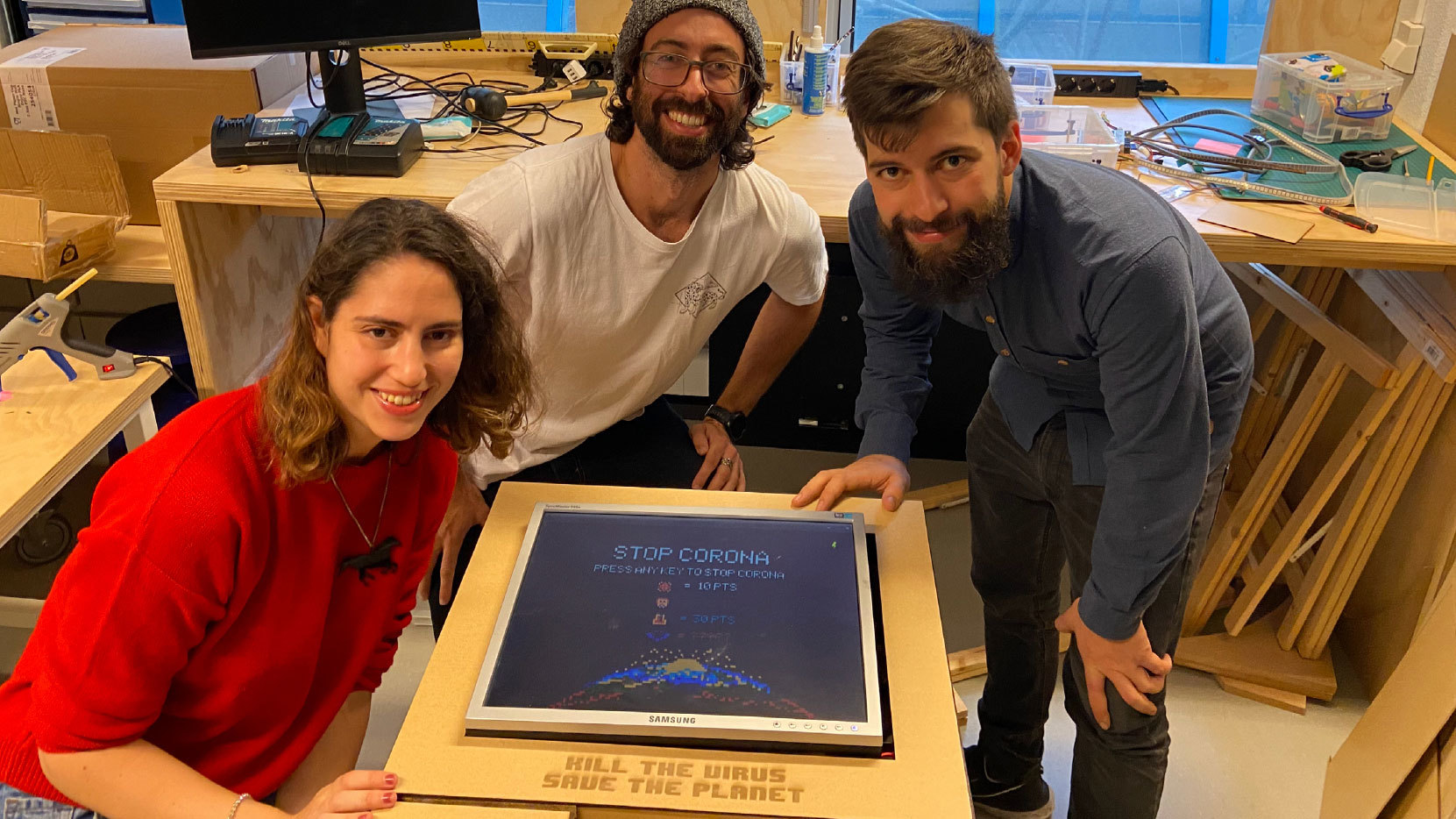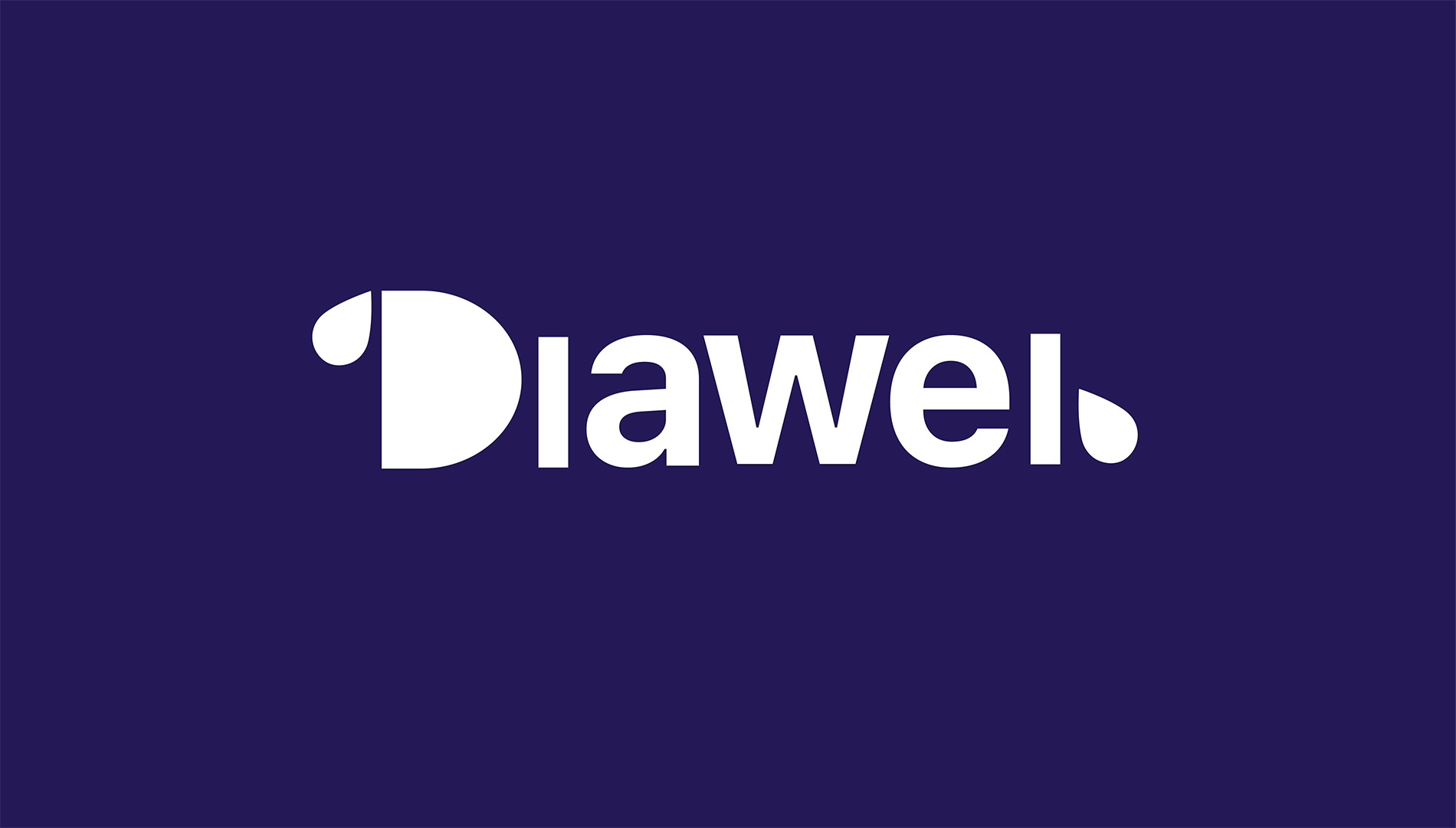
CRUX
Climate Responsible UX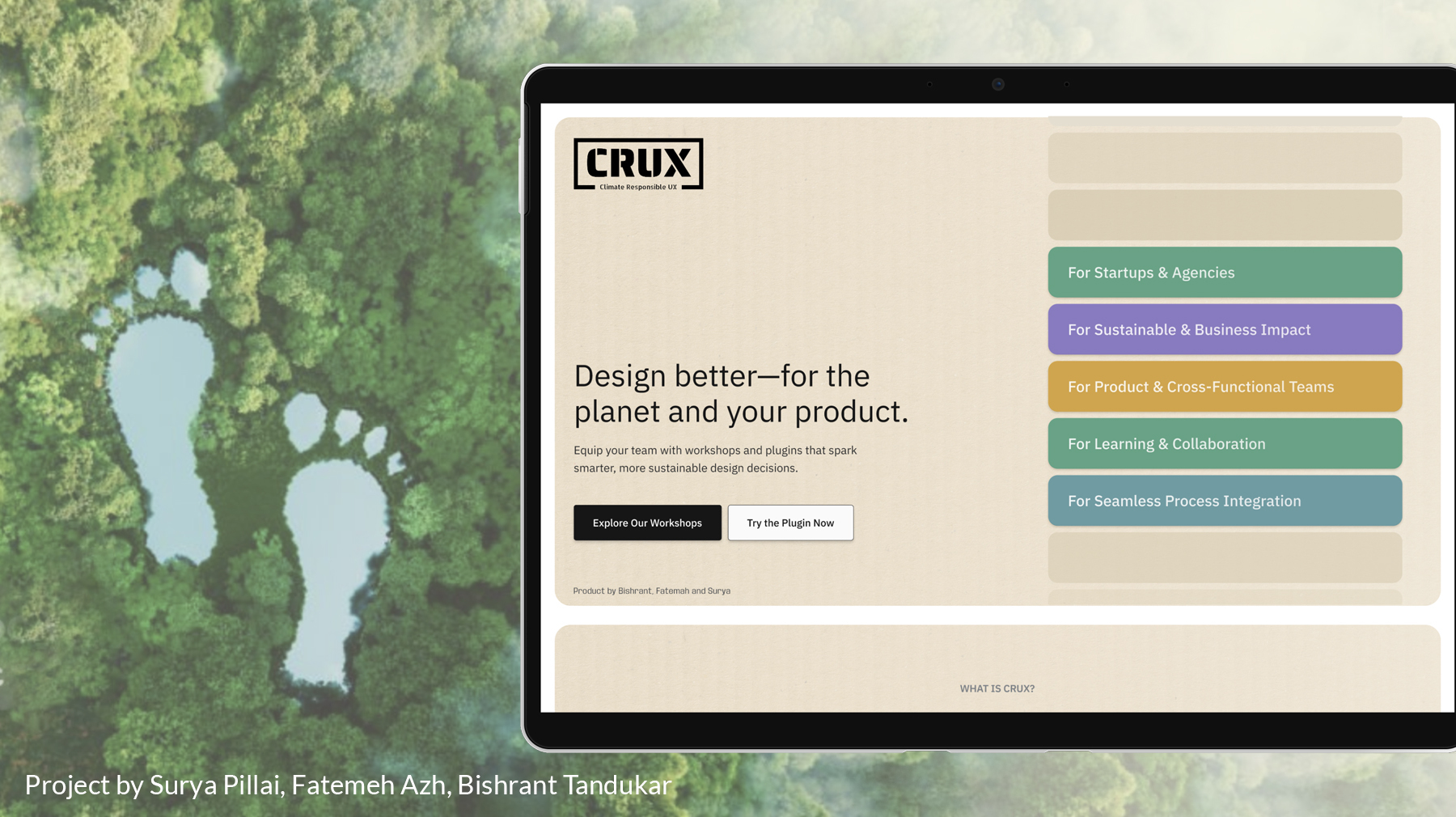
- Client:
- Team:
-
Disciplines:
UX/UI, Product Design
-
Schoolyear:
2024-2025
The internet today emits CO₂ equivalent to the global airline industry, which is 1.6 B tonnes and growing. It is high time we shifted our gaze beyond the individual, towards the ecosystem around us, towards the systems we’re shaping silently with every scroll, click, and swipe. Towards ‘human humanity-centred design’. And UX teams can help! Just like its name, CRUX gets to the heart of what matters, bringing sustainability into the core of the UX process.
UX teams play a huge role in shaping the digital world, yet their impact on the planet often goes unnoticed. While sustainability frameworks exist, they rarely fit into design workflows. Most designers lack tools that make sustainability tangible and actionable.
Our main questions were:
How do we bring sustainable thinking into the design process in a way that feels natural, not like extra work, but still makes teams pause and reflect?
How do we get clients and stakeholders to care too, and show them it’s good for business, not just the planet?
Talking to sustainability experts and design agencies revealed that ‘Digital Sustainability’ is more than ‘Climate action’. It is the impact that digital products have on the environment, users, business, and the long-term systems. In our research, we found that Sustainable UX principles and manifestos do exist as silos, but aren’t seamlessly integrated into the design workflow. And to get businesses on board, one needs to showcase the benefits it has on achieving ROI and fulfilling business goals.
The Process
We started with research and expert interviews to understand agency pain points. Then, through a series of design sprints, we developed CRUX, a toolkit combining two collaborative workshops and a sustainability checker plugin.
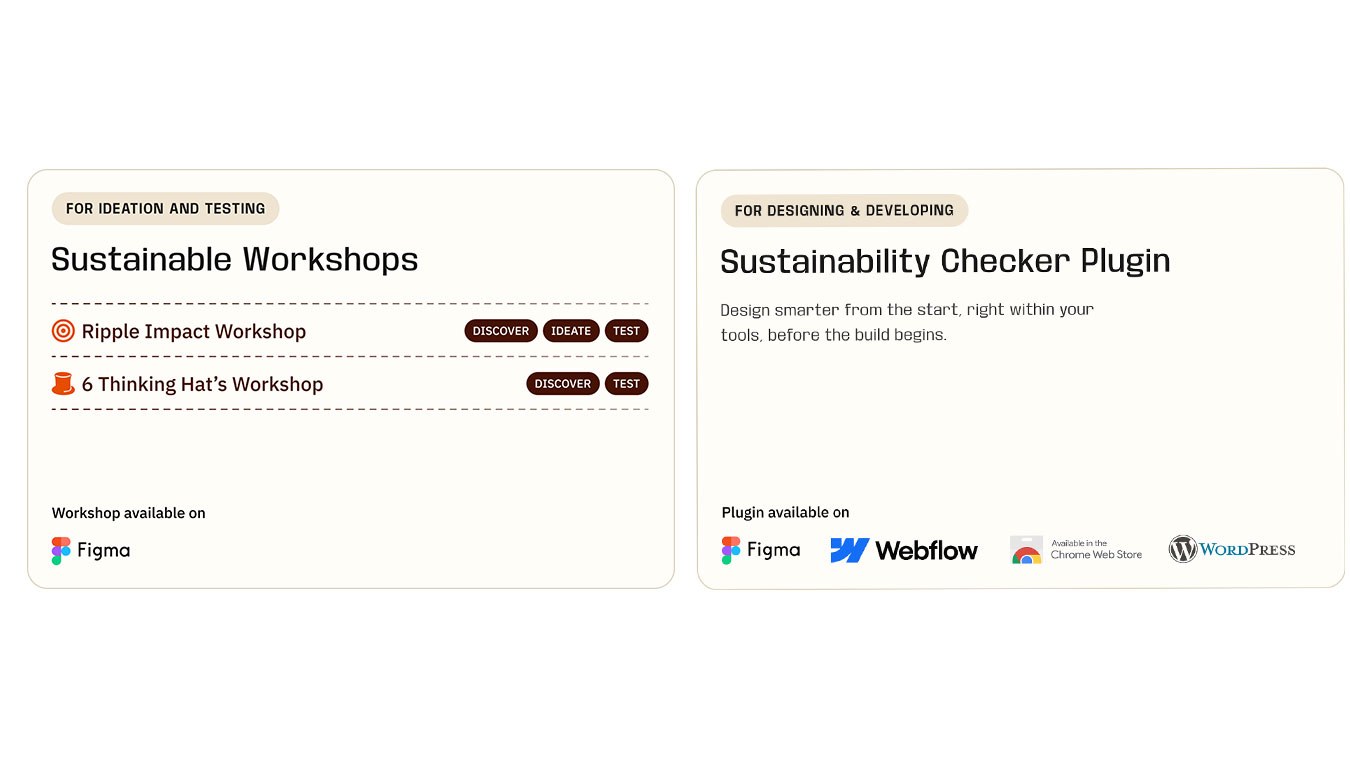
1. Ripple Impact Workshop: A mapping activity for ideation and testing. It helps teams explore the ripple effects of a design decision on users, the environment, business, and systems. Participants use visual maps and “constraint cards” to reflect on trade-offs and see the bigger picture.
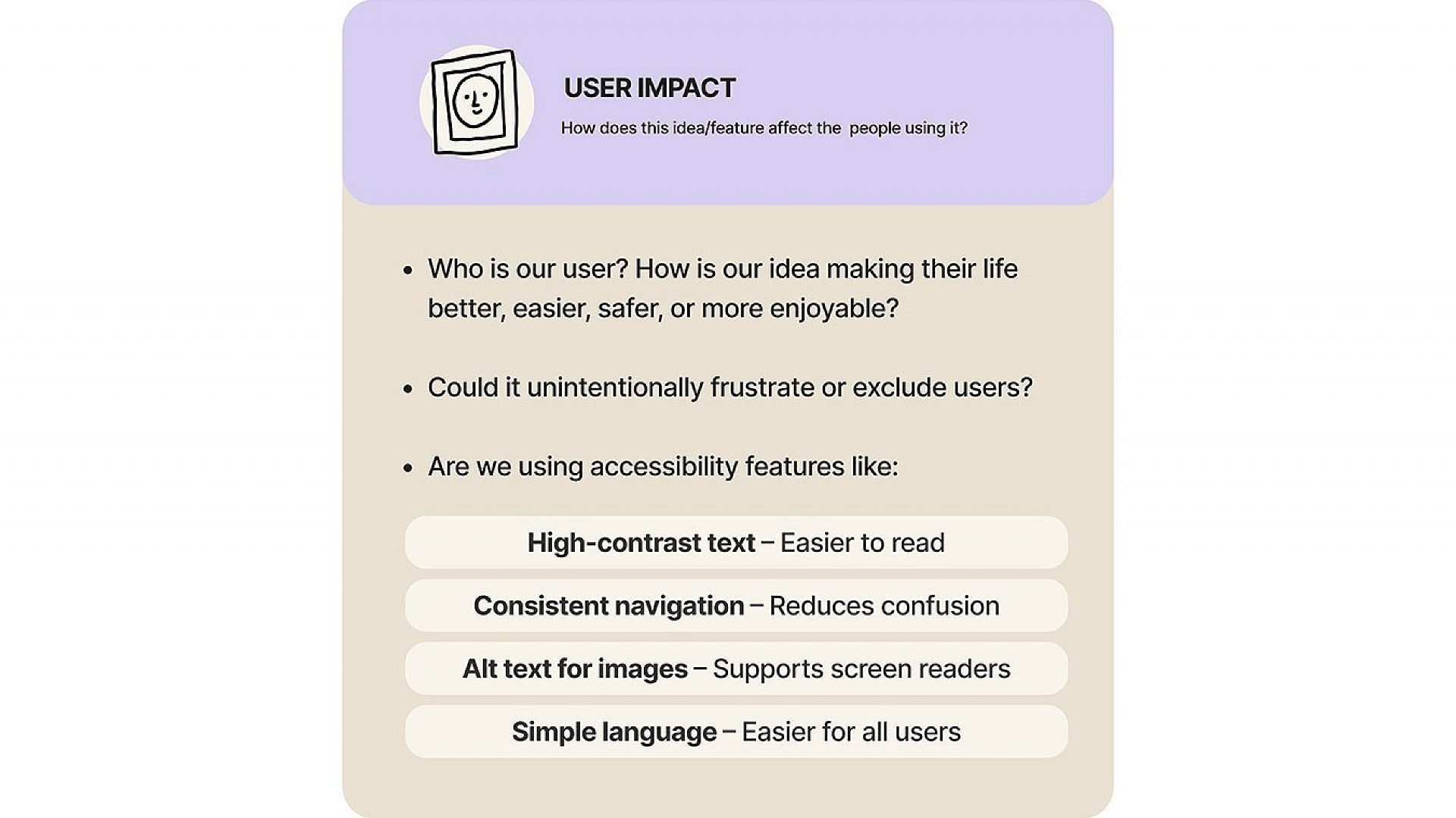
Click through for all four impacts features
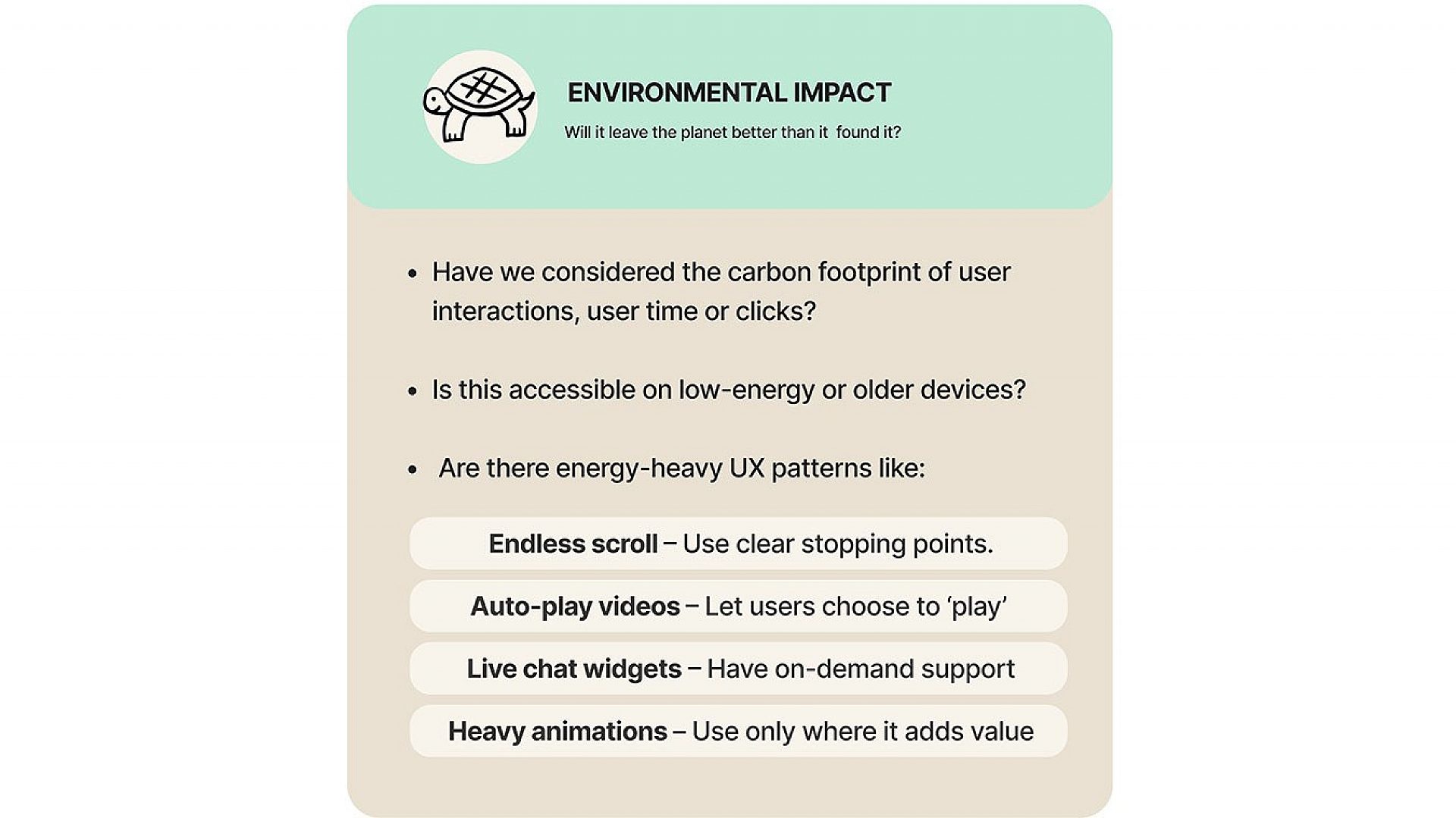
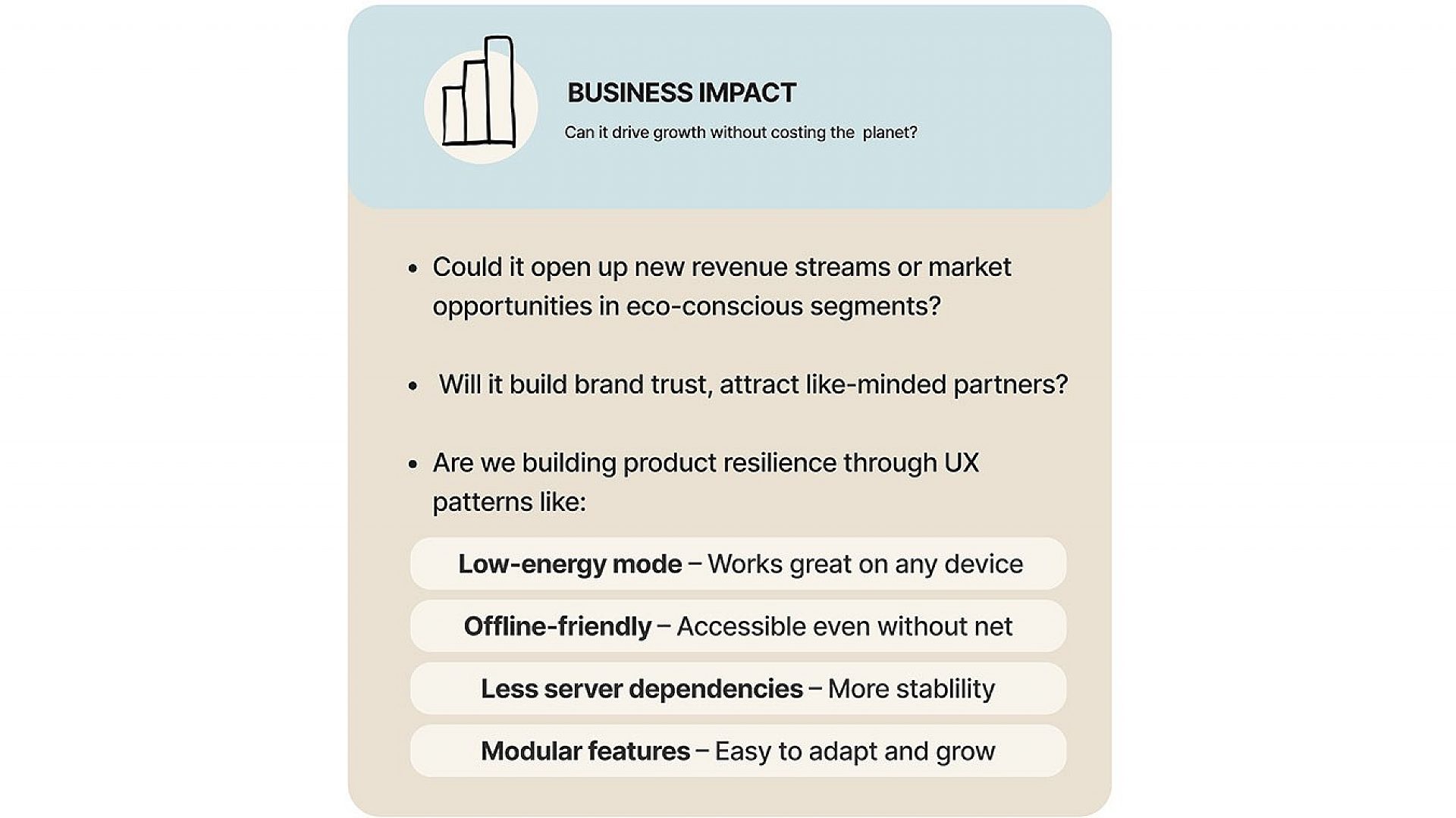
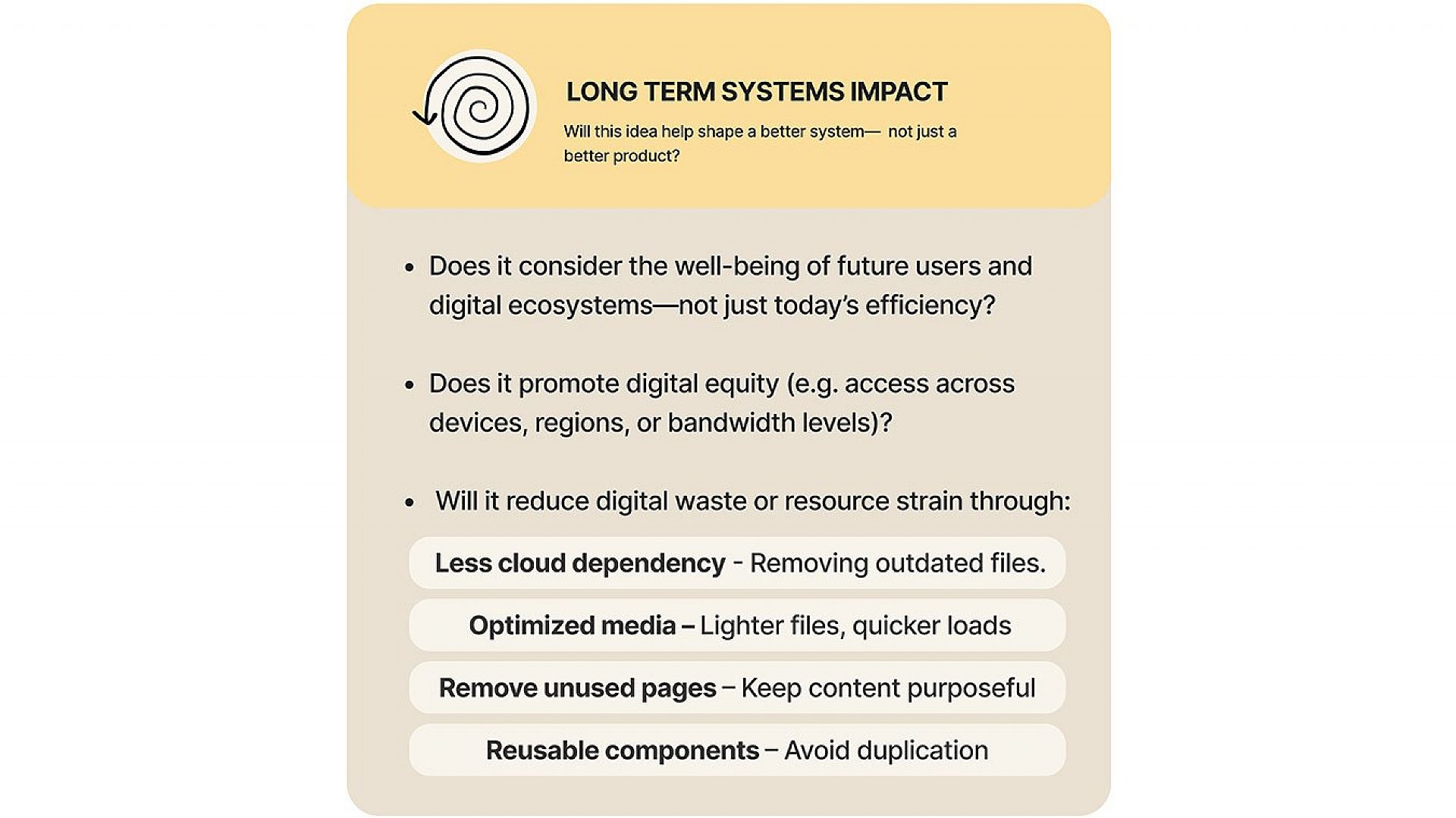
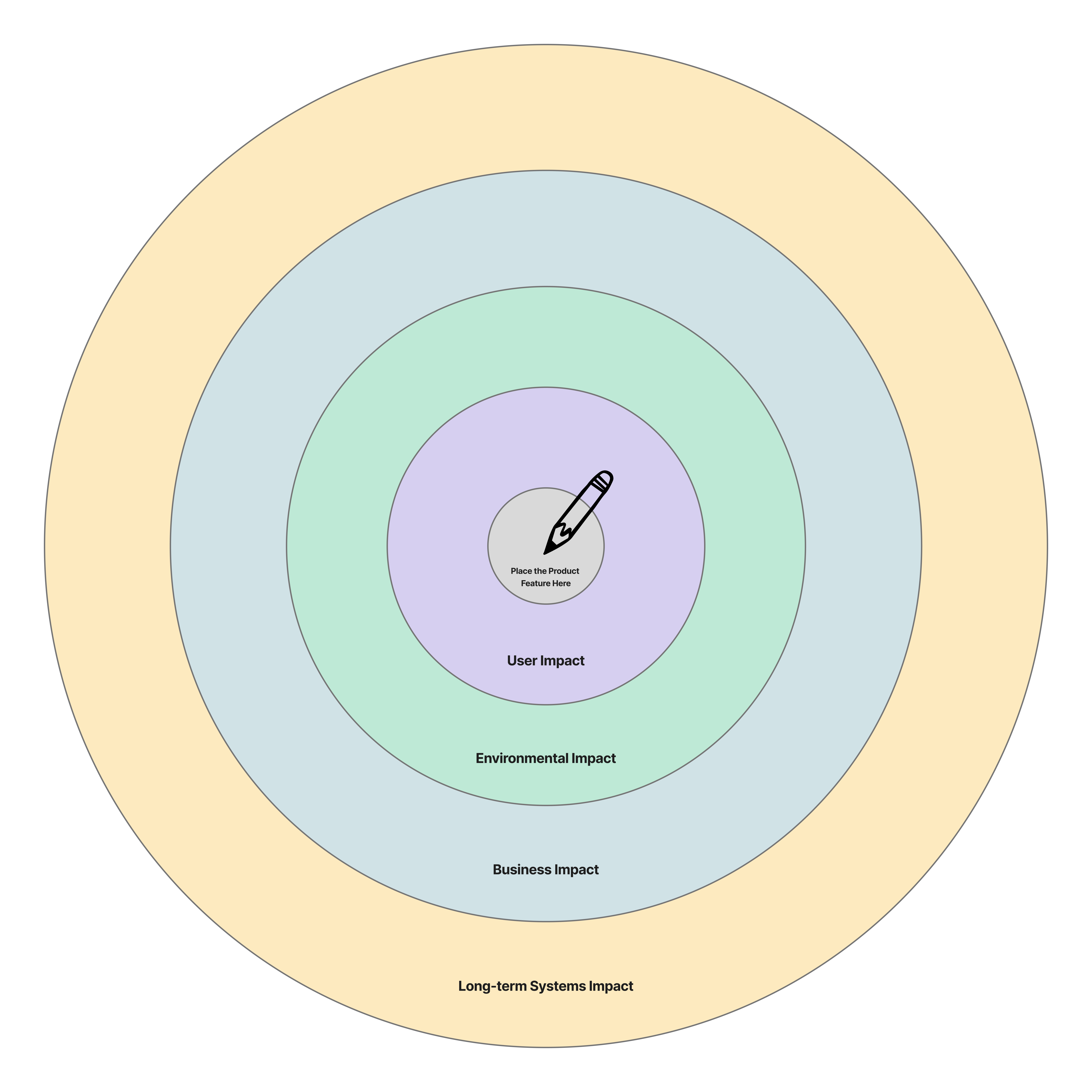
2. Six Thinking Hats Workshop: Inspired by Edward de Bono’s method, this workshop helps teams evaluate digital products from different perspectives: logical, emotional, critical, and creative. Combined with real-world challenges like budget, deadlines, client requests, etc., in the form of “constraint cards”, it helps teams make balanced design decisions and visualize the distribution of their impact across the sustainability triangle: user, business, environment.


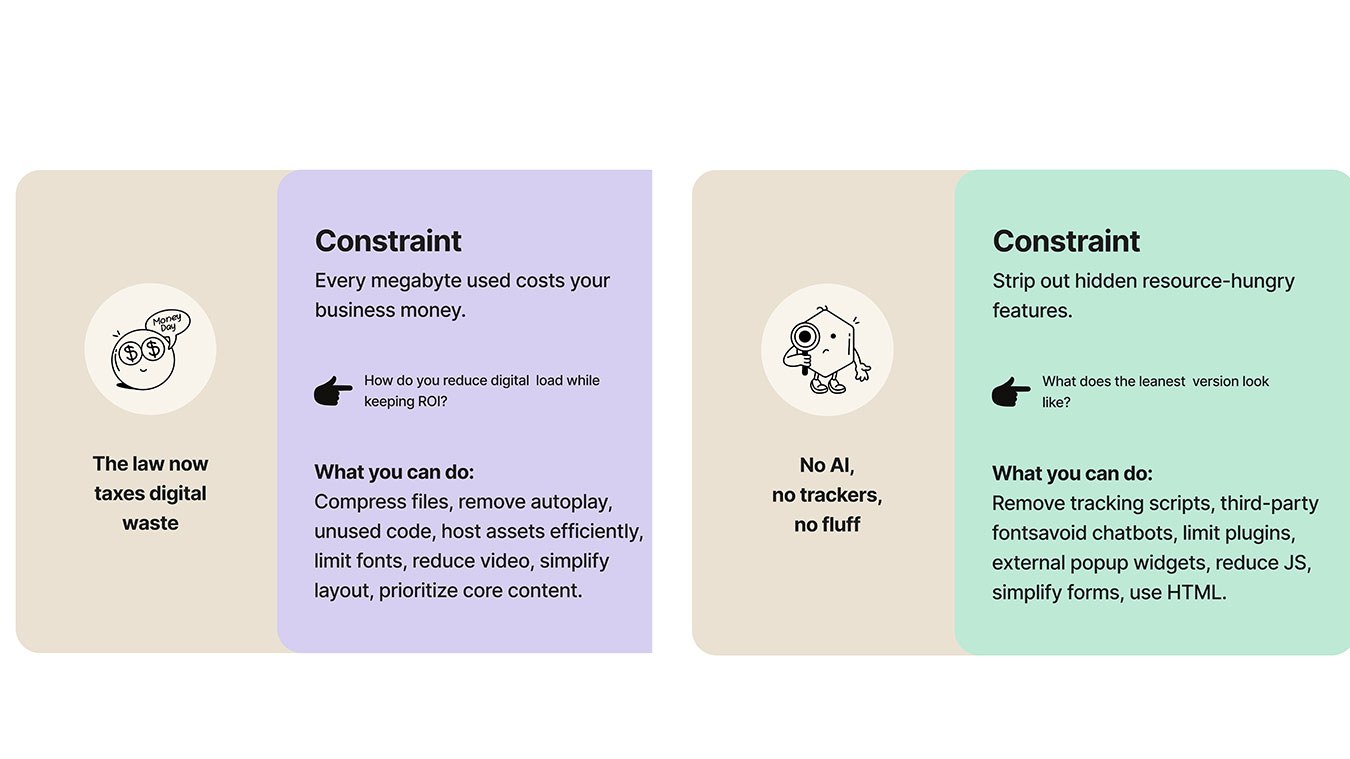
3. Sustainability Checker Plugin: To meet designers where they already work, we designed a plugin that estimates CO₂ emissions per page view, powered by The Green Web Foundation API. It offers an instant “sustainability score” and practical tips to reduce impact, like compressing images or removing heavy scripts.
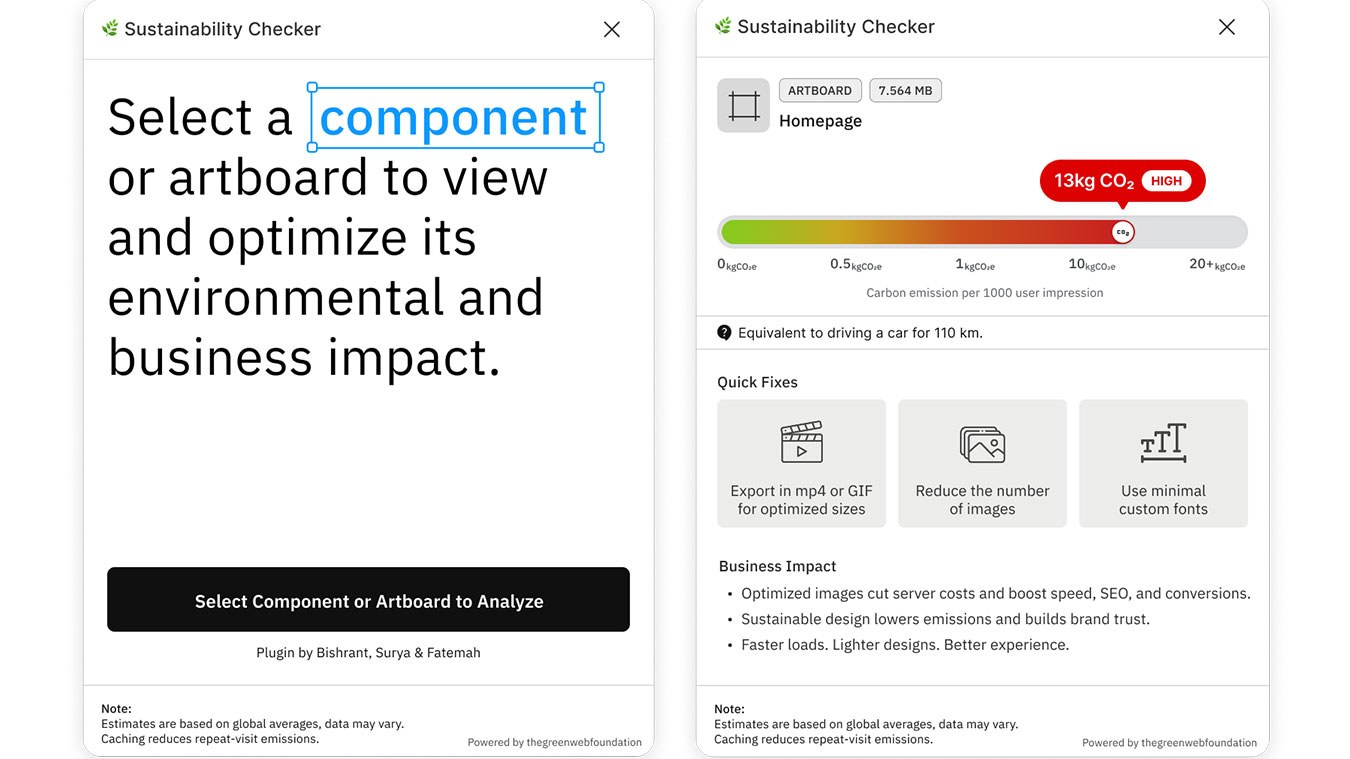
All elements of CRUX were inspired by global sustainability frameworks, including:
UN Sustainable Development Goals (SDGs)
Sustainable Web Design Guidelines
UNEP Action Plan for a Sustainable Digital Age
Circular Design Principles
Iteration and Testing
We tested the workshops with fellow designers, refining them through five iterations. Early versions were too abstract, participants needed more guidance, so we added visual prompts, examples, and a structured flow.
For the plugin, we started with multiple metrics (data transfer, energy use, privacy). But testing showed simplicity wins. So we focused on CO₂ per page view and visual weight, offering clear, actionable insights instead of overwhelming data.

Click through the pictures for more



The Outcome
CRUX emerged as a Sustainability Kit, a practical set of tools to help design agencies make sustainable decisions across all stages of a project.
Outcomes:
Two FigJam workshops named Ripple Impact and 6 Thinking Hats, and printable card decks to run sustainability sessions in teams.
A prototype plugin for Figma, WordPress, Webflow, and Chrome, making carbon awareness part of everyday workflows.
A landing page and visual identity to communicate the CRUX vision clearly and accessibly.

Impact:
Testers said the workshops sparked deeper team discussions and made sustainability “feel achievable.”
Designers using the plugin described it as “a great starting point” for raising awareness of digital emissions and inspiring small, mindful changes in everyday design decisions.
What’s Next:
We plan to continue improving CRUX by:
Improving workshops' usability through testing the toolkit with more diverse design teams and
Developing a beta version of the plugins with basic CO₂ estimation, to test their usefulness in real design workflows.
Collecting more data and stories from agencies that try CRUX, to understand how sustainability reflections influence their design decisions over time.
CRUX is just the beginning, a nudge to reflect and design with care for what exists beyond the screen. Our focus is on making the toolkit simple, intuitive, and easier to use, meeting teams where they are, without adding friction. We imagine a future where net-zero isn’t just a sustainability metric, it becomes a second nature, woven into every process, every screen.

Key Takeaways
Sustainability can (and should) live inside the UX workflow.
Simplicity drives adoption: designers prefer clear, focused tools over complex systems.
Reflection, not perfection, is the first step toward a more sustainable digital future
